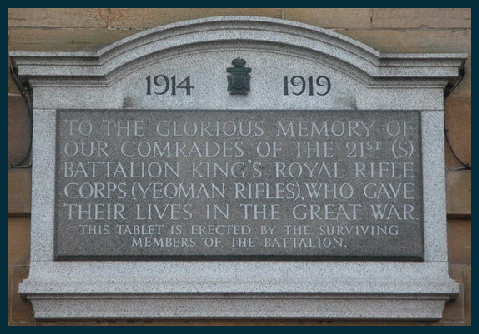Copyright © All rights reserved.



Alfred Percival Sleightholme
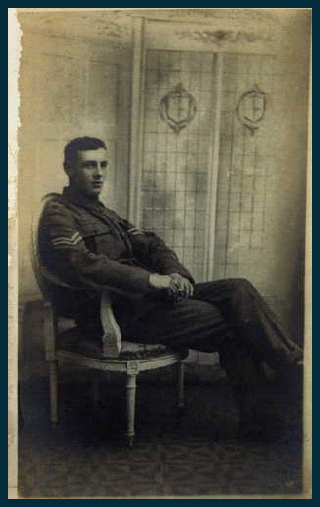
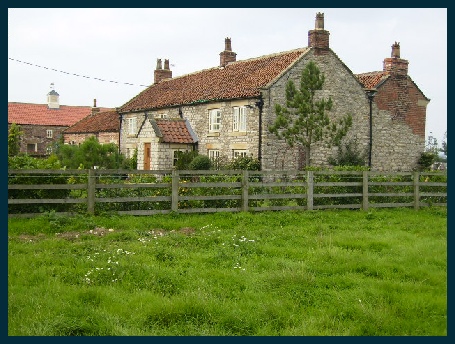
Alfred Percival Sleightholme was born on 8th March 1896 at Stainer’s Farm just outside Little Barugh but in the parish of Kirby Misperton. He was the next-
George was a tenant farmer and a Wesleyan lay preacher (as was his father before him) and had been born in Farndale before his father moved to Stainer’s farm during the 1860s. Stainer’s Farm was a somewhat isolated holding of about 100 acres which Joseph Sleightholme rented from the late 1860s, and George took over the tenancy from him when he married. Joseph continued to farm in Little Barugh until his death in 1903 and the eldest of George and Isabel’s sons, also called Joseph, lived with his grandparents working as a farm boy.
1901 Census -
George H. Sleightholme, Head, Married, Male, 45, Tenant Farmer, Farndale, Yorkshire
Isabel Sleightholme, Wife, Married, Female, 44, -
Jane Elizabeth Sleightholme, Daughter, Single, Female, 20, Farmer's Daughter, Kirby Misperton, Yorkshire
John William Sleightholme, Son, Single, Male, 17, Farmer's Son, Kirby Misperton, Yorkshire
Mary E. Sleightholme, Daughter, Single, Female, 14, Farmer's Daughter, Kirby Misperton, Yorkshire
Robert Sleightholme, Son, -
George H. Sleightholme, Son, -
Herbert Sleightholme, Son, -
Richard Sleightholme, Son, -
Isabel Sleightholme, Daughter, -
Ernest F. Sleightholme, Son, -
Alfred P. Sleightholme, Son, -
Their family continued to grow and by 1904 the family had moved to Sherburn where most of the family continued to work on the farm.
1911 Census -
George Henry Sleightholme, Head, Married, Male, 55, Farmer, Yks Farndale Kirbymoorside
Isabel Sleightholme, Wife, Married 31 years – 12 children living, Female, 54, -
Jane Elizabeth Sleightholme, Daughter, Single, Female, 30, Farmer's Daughter (Dairy), Yks Kirbymisperton Pickering
John William Sleightholme, Son, Single, Male, 27, Farmers Son Working On Farm, Yks Kirby Misperton Pickering
George Henry Sleightholme, Son, Single, Male, 21, Farmers Son Working On Farm, Yks Kirby Misperton Pickering
Herbert Sleightholme, Son, Single, Male, 20, Watch Maker's Apprentice, Yks Kirby Misperton Pickering
Richard Greig Sleightholme, Son, Single, Male, 19, Farmers Son Working On Farm, Yorks Kirby Misperton Pickering
Isabel Sleightholme, Daughter, Single, Female, 17, Farmers Daughter (Cook), Yorks Kirby Misperton Pickering
Ernest Fenwick Sleightholme, Son, Single, Male, 16, Draper Apprentice, Yorks Kirby Misperton Pickering
Alfred Percival, Sleightholme, Son, Single, Male, 15, Farmer's Son Working In Farm, Yorks Kirby Misperton Pickering
Albert Sleightholme, Son, Single, Male, 13, Farmer's Son Going To School, Yorks Kirby Misperton Pickering
Edward, Milner, Servant, Single, Male, 17 Wagoner On Farm, Yorks Sherburn York,
Frances Mary, Bowes, Servant, Single, Female, 18, General Servant Domestic, Yorks Wykeham S O York
These photographs show George and Isabel about 1904 after their move to Sherburn.
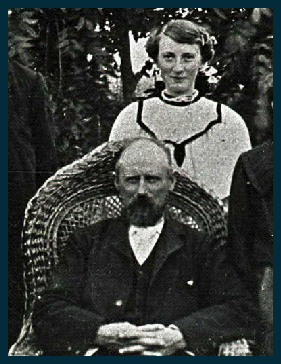
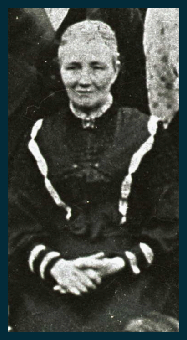
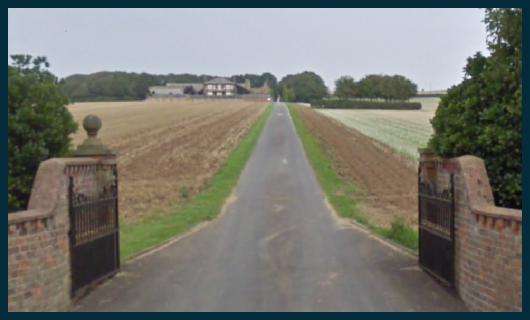
By the time war was declared Alfred was working in Malton at Finch’s, the big drapers shop on the Market Place, and the family had moved to Westfield House in Wold Newton, a large farm to the west of the village.
In the Autumn of 1915, in consequence of the number of men of the farming and yeoman class who were believed to be holding back from enlisting, the only ‘Pals’ Battalion to be formed during the Great War from farmers, the 21st Battalion of the King’s Royal Rifles , soon to become more familiarly known as ‘The Yeoman Rifles’, was created at the behest of the War Office. As an enticement to the ‘reticent farmers’ the War Office had stipulated that the recruits would be serving in a sort of exclusive club
that would consist only of men of ‘equal stature’. The War Office had also made service with the new battalion doubly attractive by affiliating it with one of the more elite Regiments of the British Army, The Kings Royal Rifle Corps, one of the few Regiments in which the rank of private had been substituted with that of ‘Rifleman’. Command of the new Battalion was given to a local man, the second Earl of Faversham, Charles William Reginald Duncombe. Already the long serving Commanding Officer of the Yorkshire Hussars Yeomanry, the thirty six year old Earl had landed in France with his regiment in April 1915, but it had subsequently been broken up into Divisional Cavalry, so when he was offered command of the burgeoning battalion he gladly accepted, making his headquarters and regimental depot at Duncombe Park in Helmsley.
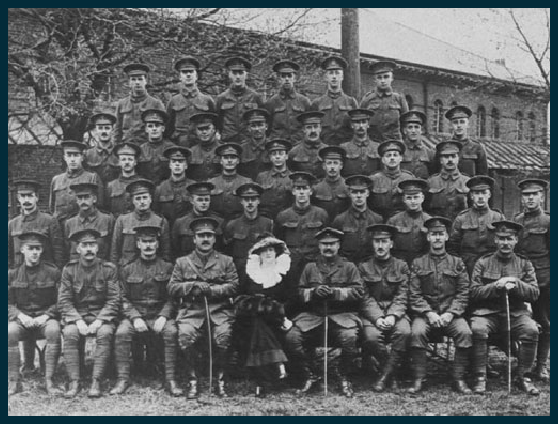
Initially, the battalion was recruited exclusively from the yeoman class, however by late 1915 so many young men of military age were already in the Army that although the most remote farms and villages were scoured and although there were accommodating Recruiting Sergeants willing to turn a blind eye to the farm lads whose tender years had been belied by a hefty physique there had still not been enough ‘Yeomen’ to make up a full Battalion. Recruits had gradually arrived at Duncombe Park but it was not until their numbers had been swelled by a draft of ‘less exclusive yeomen’ that the Battalion could begin training in earnest. [The Battalion had eventually consisted of four companies of Riflemen, ‘A’ was composed of men from the North and East Ridings, ‘B’ from the West Riding of Yorkshire, ‘C’ from Northumberland and Durham, and ‘D’ from Leicestershire, Lincolnshire and Norfolk]. This is not to say that the battalion had lowered its standards. According to the war records of the unit; ‘The men accepted were of a very high standard physically educationally and socially the battalion priding itself on having less crime than any other in the service’.
Among the very first recruits to this battalion was Alfred Sleightholme who enlisted at Scarborough on November 5th 1915. His enlistment papers show that he was then 19 years and 7 months old and just under 5’10” tall. He weighed 9 stone 8lbs, had perfect eyesight and had been vaccinated as a baby though the army took nothing on trust and had him re-
Much like all the ‘New Army’ Battalions forming at the time, life in the battalion to begin with was probably fairly Spartan, and with shortages in the supplies of uniforms, the recruits had to wear the clothes and boots that they had arrived at the Park in for all the inevitable marching and manoeuvring that all recruits to any Army have to endure. There was also a shortage of weapons and broom handles, spades, and perhaps a few antique shotguns were not an uncommon sight in the hands of the newly fledged soldiers of the New Armies.
Training nonetheless went ahead. A popular story relating to the battalion’s formative days tells of one occasion when the Earl had the idea of practising the Battalion in the art of the ‘open order advance’ against a herd of deer which he had wished moved to another part of the estate. Sure enough, under their Colonels watchful eye a hundred or so Yeomen had advanced on the Deer, the animals who it would appear were not keen to be moved had stood their ground, and had turned on and eventually charged the men in a counterattack, so purposeful was their advance that there had been no question of a dignified ‘retirement’, it had been an ignominious rout, -
The Battalion eventually left Duncombe Park on the twenty fourth of January 1916 to move to Salamanca Barracks in Aldershot where it had united with the 18th Battalion of The Queens [Royal West Surrey Regiment], the 26th Royal Fusiliers [composed of bank clerks and accountants from the City of London] and the 32nd Royal Fusiliers, to form the 124th Infantry Brigade of the 41st Division. Here the Battalion remained, engaged in divisional training, earning for itself an excellent name in both work and play until May when the Battalion was inspected by King George the Fifth, shortly after which the men were issued with live ammunition and their identity discs and orders to proceed abroad, the first yeomen setting foot on French soil at Le Havre on the fourth of May 1916.
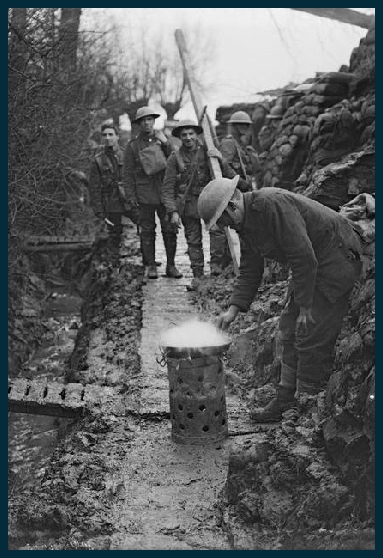
The Battalion underwent three weeks of training to familiarise them with the arts of trench warfare before they went into the line for the first time as a fighting unit at Ploegsteert [Known to the men as Plugstreet]. They began their journey to the front first by train and then on foot over ground increasingly torn and shattered by war.
By the beginning of June they were learning the reality of this war, losing some thirty men from enemy bombardments and alternating between the front line trenches and billets in the reserve lines. In July this pattern continued including a raid carried out on 10th-
“From Officer Commanding 21stKRRC
To Head Quarters 124th Infantry Brigade
Sir;
I have the honour to report that in accordance with your order No.25, a minor enterprise with the intention of capturing prisoners and doing as much damage as possible to the enemy was carried out by the Battalion last night 10/11th July against the hostile trenches opposite Trench 113.
Strength of party 1 officer, 7 NCOs & 26 men. Nominal Roll attached.
Disposition. The party was divided into three groups of 9 numbered X.Y.Z. Each group was further subdivided into sections of 3, in accordance with orders issued by me, already submitted.
At 11.45 p.m. the party paraded in Gap G, their equipment was carefully checked, it consisted of 4 men with rifles and swords, remainder bombs in bombing waistcoats and knobkerries. NCOs knobkerries and revolvers. 9 men with wire-
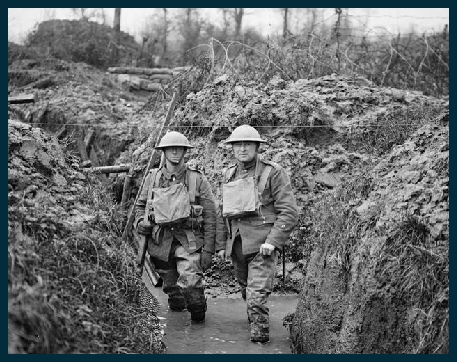
2nd Lt. Law had considerable difficulty with the wire, but emptied his revolver into the enemy. As they went over the parapet into the trench, the remainder of the party retaliated vigorously with revolvers, rifle fire and bombs, discharging approximately 110 bombs. They heard a good deal of yelling on the part of the Germans, and are confident that a considerable number of their bombs took effect. One man was on the point of bayoneting a German close to his own parapet, when he was wounded and the German escaped. At about 1.6 am seeing that it was impossible to enter the trench, as the majority of the party were held up by the wire, they gradually withdrew to a ditch in front of our own wire and laid down in the grass, and awaited instructions to come in over the parapet. The signals to return were duly given as arranged for at 1.8 am and were observed without difficulty. By 1.45 am the majority of the men had come in. Search parties under 2nd Lt Hervey and Sgt Salmon who both did very useful work went out of the trenches to look for the remainder, and to help with the wounded. By 2.20am the last man who at first was reported as missing had been brought up.
As previously stated the artillery bombardment commenced at 12.59 am and as far as can be ascertained the accuracy of the shooting was quite satisfactory. The enemy retaliated very slightly, sending over only one large shell, or possibly Trench-
Enemy's Machine-
Enemy's wire In spite of some rather narrow gaps having been made in the wire two days previously by the Artillery, the party found that the wire confronting them was a considerable obstacle. In addition to knife-
Enemy's bombs These appeared to be ineffective as several exploded quite close to the leader of the party & he could hardly have escaped if the bombs had been of the same quality as ours.
Conclusions From the observations of the officers, NCOs and men who took part in the raid, it appears that undoubtedly a strong working party was present in the section of the trench attacked, and it is possible that as there had been a lull in the machine-
Casualties
C/12164 Rfmn BELL, TW. killed (carried in by Sgts Baker & Robinson).
C/12564 Rfm WOOD W. wounded. C/12592 Rfm STABLER, S wounded.
R/13078 Rfm HOLT, W, wounded (all evacuated). C/12360 Rfm, EMMERSON, G R and C/13001 Rfm FAIL, R (slightly & at duty).
In accordance with your letter 124.IB/G615 ordering that in minor enterprises an officer should be detailed as O.C. Enterprise to remain in the trench, I assumed that position and established my Head Qrs at Coy Hd Qs -
I have the honour to be, Sir, your obedient servant Feversham Lt-
At the beginning of August Earl Feversham was summoned to England on urgent private business but rejoined the battalion as it was ordered to the Somme in the middle of August.
12.20 am The first man, the leader of the party, 2nd Lieut. RWR Law, went over the parapet in bay of T113. The remainder of the party followed in single file, the last man passing over at 12.34 am.
12.41 am The signal of one Very light was fired from Picket House in the direction of the Birdcage. On this signal the party advanced in line of 3s, at about 3 yards interval creeping through the grass. Our Machine Gun fire was applied intermittently on the enemy's parapet all the evening, with a view to preventing the mending of the wire.
At this time (12.41) our machine guns increased their fire in accordance with my instructions, the object being to drown the noise of the party creeping through the grass. The artillery bombardment and the signal for the push into the enemy's trenches was timed for
1.0.am. The bombardment commenced at 12.59 & was followed half a minute later by the firing of the signal "2 Very lights from Picket House". This signal was very easily distinguished by the party, who knew exactly from which part to expect them. During the advance through the grass, 2nd Lt. Law heard a hostile wiring party in front of him and at the signal of the two Very Lights, the whole party got up and pushed for the trench. They had reached the enemy's wire before being fired at, while they were negotiating the wire, they were greeted with machine gun, rifle fire, & bombs.
CSM McEwen succeeded in getting through the wire, rather in front of 2nd Lt Law, and got on to the enemy's parapet. He was distinctly able to see the enemy's machine gun emplacement and some Germans in the trench, but at this time he was knocked over by the explosion of a hostile bomb, into a pit full of wire, but escaped injury.
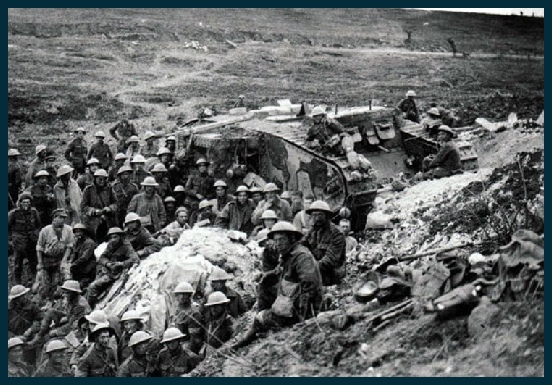
The beginning of September found them at Francières engaged in Coy and Battn training. The future primen Minister AAntony Eden wrote “ My clearest memory is of the company marching back to billets along a dusty country road, tired but cheerful and singing so that even Norman Carmichael's firm repetition of the step to No 10 Platoon could scarcely be heard. The next night just before the light of dawn, the Yeoman Rifles wound up the hill out of Françières to entrain for the Somme. As they sang 'There's a long, long trail a-
They had begun their journey to the front first by train and then on foot over ground increasingly torn and shattered by war, and had passed through broken villages and places with names synonymous with death, Fricourt, Mametz, Montauban, and Caterpillar Valley. On the way they had passed weary stricken men marching raggedly in the opposite direction, men gaunt with fatigue, ashen in face and haggard eyes, men who had witnessed very violent death at very close quarters. Now their replacements were making their final approach. Sergeant Norman Carmichael of ‘C’ Company wrote: ‘Presently we dropped into a communication trench and then began that laborious serpentine crawl that seemed to have no end. At first it was not so bad; the companies behind kept touch and progress was steady, if slow. But messages began to pass along the line, from front to rear, from rear to front. We would come to a halt. ‘Pass the word back to close up’. The message would fade away to silence along the line, and then there would be a seemingly interminable delay until the reply would come from the rear. We would stagger forward again…just like a concertina opening and closing…Dimly we realised from the shattered stumps that we were in Delville Wood and those gifted with a sense of smell experienced the stench of that horrible place…We encountered dead bodies at more frequent intervals, gruesome stinking shapes. The colonel with his torch identified on some the black buttons of the Rifles [King’s Royal Rifle Corps]. Oh! That dreadful night during which we crawled like snails through the midst of horrors less darkly imagined than actually realised. Well was it called Devil’s Wood’.
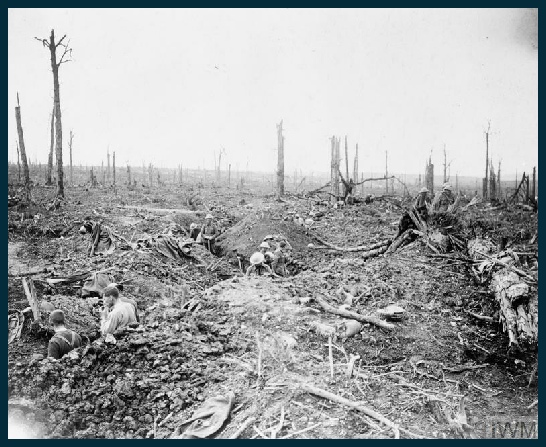
On the 10th Feversham and some of his officers visited Delville Wood. “We were on the edge of the battle area and I began to see real devastation...All around us were the sights and sounds of war as I had never known it...
[Feversham] stood for a moment outside his truck, '40 hommes 8 chevaux', listening to the guns and drinking in the scene, as strange to him as to me. Then he turned to Foljambe and said with deep feeling, 'The real thing at last, thank goodness.'”
On the 13th preparations were made for battle and the battalion moved up to Pomières Redoubt marching out at 4pm & arriving about 7.30 pm & bivouacked for the night. Officers and men not taking part in the forthcoming attack joined the transport & proceeded to Bècourt Wood. Eden writes:
“…each company had to leave behind two officers and two senior sergeants as well as a percentage of junior NCOs…I asked casually who was to be left behind. He said,'You, Boy,' and mentioned another comparatively senior officer. I was outraged and exclaimed that he could not possibly leave me behind…I was not appeased and asked to see the colonel…Charlie Feversham shook his head. It's not like that, Anthony…Don't you think I would like to have Foljambe with me? But it cannot be. We have to take some thought for the battalion's future.'”
Tasked with the capture of the three trench lines to the east of Flers the Yeoman Rifles had assembled in the early hours of the fifteenth in ‘No Mans Land’ to wait for the whistle to announce Zero Hour [6-
‘We were the first to go in ‘C’ Company. I think our captain gave the order to advance a little bit before the time because we’d been trained that the closer you kept to the creeping barrage the safer you were. But we overdid it. We walked straight into it and it has to be said that there were many shorts. The artillery was good but they weren’t all that perfect and they couldn’t guarantee to put a curtain in a straight line that you could keep behind. I went down very early and I saw my officer going on just in front of me. He was brandishing his revolver and shouting, ‘Come on number ten!’ and he just went down. He got a machine gun bullet right through the head. The Germans had got up by then and my platoon was literally put out of action in a very short time. The last I saw of them were about a half a dozen going through the smoke climbing up this ridge to get into the German trenches, and I was left lying there’.
‘Tea Support’ had fallen by 6-
The tanks action had spurred the dumbfounded British infantry into action, running into the road they had raced after the machine cheering all the way, searching out any remaining defenders, most of whom had already ‘hot footed’ it to the nearby village of Guedencourt. The pile of bricks known as Flers had fallen by 10am. Shortly afterwards however the Germans had as usual retaliated with a violent artillery bombardment the British coming within a hares breath of being shelled out of the place, but somehow they had managed to hold on.
In the afternoon two officers had been sent round the village to collect stragglers to enable the advance to move on to the third objective, a trench known as ‘Bulls Road’. This had been achieved and in addition a troublesome double redoubt known as ‘Box and Cox’ had been taken, this action linking the 41ST to the unit on their left, the New Zealanders.
To the east of the village the 124th Brigade had become pinned down in the waste land of the shell blasted ‘No Mans Land’ by a terrific German artillery fire, losing valuable men all the while. At around 3-
The Yeoman Rifles had fought itself almost to a standstill on the fifteenth of September 1916 and would never be the same again. Relieved from the line in the early hours of the following day, the survivors had trudged out to ‘rest’.
The remains of the Battalion paraded on the sixteenth and a roll call was taken. It was found that three officers [including the Earl of Feversham] had been killed and another ten were wounded. Of the Non Commissioned Officers and men, fifty-
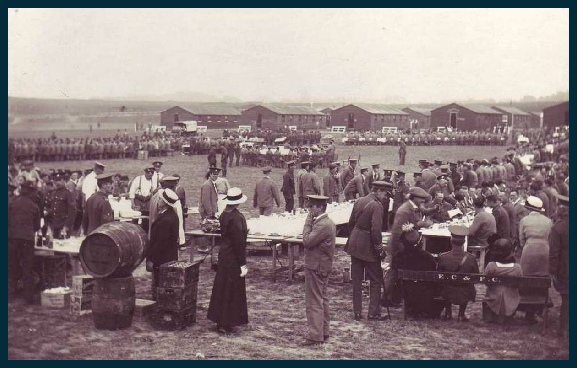
During this action Alfred was wounded, receiving a superficial wound to the side of his chest and after preliminary treatment, he arrived in Boulogne and was shipped to England on Hospital ship “St David” within a fortnight he was healing well, and was discharged to the Military Convalescent Hospital in Eastbourne.
Alfred spent several months on leave in England but in January he was cleared for active service once more. En route to France, he went AWOL in Sheerness for a few hours and was reprimanded and docked 3 days pay.
After promotion to Lance Sergeant (basically doing the duties of a sergeant on a corporal’s pay!) he was posted to the BEF Base depot in Boulogne, before re-
After the battle of Flers the Yeoman Rifles had lost the identity that it had gone into battle with on the fifteenth of September, the replacements for the men lost in the action coming predominately from the London area. Despite its change in character the Yeoman Rifles soldiered on.
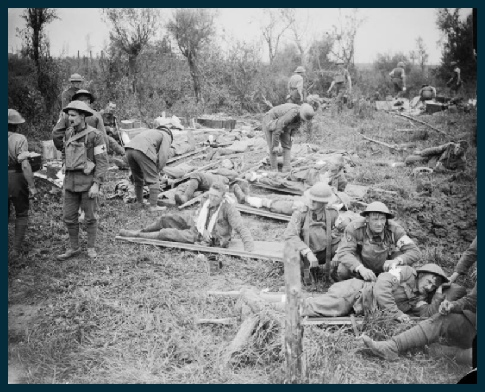
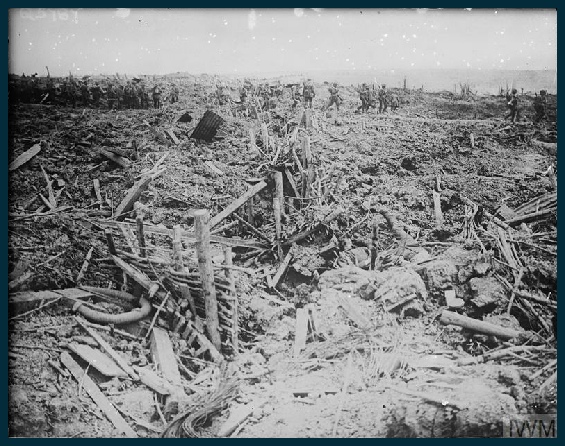
The battalion spent April 1917 mostly in Reserve in the St Eloi sector. There was some enemy action against working parties, but on the whole things were reasonably untroubled. Similarly, May 1917 was mostly spent preparing for the upcoming attack on the Messines Ridge either in the reserve areas or further back behind the lines.
On the 4th August the Yorkshire Gazette carried this article:
Military Medalist.
Sergt Alfred P Sleightholme, eighth son of Mr. Mrs. G.H.Sleightholme late of Sherburn, now residing at West Field Farm, Wold Newton, has been awarded the Military Medal while serving in France. Some time ago he was wounded, and was sent to England, and on his recovery returned to France. Prior to joining the K.R.R. he was in the employ of Messrs Finch & Co. Malton. Mr. and Mrs. Sleightholme have four sons serving with his Majesty’s Forces.
It seems likely that Alfred's Military Medal was awarded for the part he played in the Rifles’ attacks in the northern sectors south of St Eloi as part of the Battle of Messines on 7th June 1917.
Perhaps better known simply as ‘Passchendaele’, the Third Battle of Ypres opened on Tuesday the 31st of July 1917 with the so called Battle of Pilckem Ridge. On 1st August, Alfred was promoted to Acting Sergeant. The War Diary for that day says:
On the morning of the 1st August a further attack was made by the 123nd Infantry Brigade, the Battalion being in close support between the points I 36.d.3.3 and the KLEIN ZILLEBEKE ROAD. The weather conditions were extremely severe and great difficulties were experienced through the heavy condition of the ground.
On the evening of the 1st August the Battalion relieved the 20th Bn Durham Light Infantry in the left Battalion Sector, with Headquarters at the CATERPILLAR at I 31.a. 91/2 81/2. There were a few casualties during the Relief including Lieut H T WATTS who was severely wounded. There were no trenches in the front line and the climatic conditions rendered their construction impossible. Many wounded were found in the vicinity of the Front Line and Stretcher Bearers worked continuously throughout the night carrying them over almost impossible ground. “
Alfred was mortally wounded on that day. He was probably amongst these wounded and died whilst being conveyed to a Dressing Station. As a result of the frightful upheaval of the area during the later satges of the war his grave was lost or destroyed and he is commemorated among the thousands of names on the Menin Gate in Ypres.
‘The Scarborough Mercury’ of Friday the 17th of August reported his death:
‘Sherburn Sergeant killed -
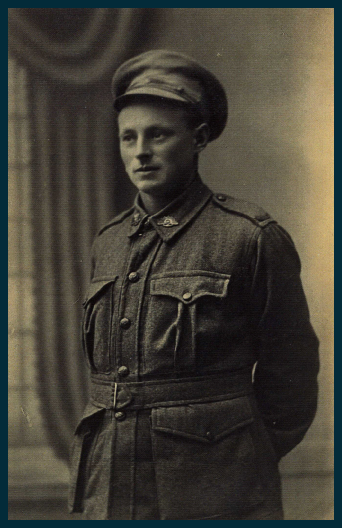
Soon after Alfred’s death, Isabel and George Sleightholme were dismayed to receive word that another son, Private Robert Sleightholme had been reported as missing in action.
Robert had been attached to the 35th Battalion of Australian Infantry and was killed in action, also during the Third Battle of Ypres, on the 12th of October 1917. A farmer before the war, Sleightholme had lived for a number of years in New South Wales in the town of Kelvin, where he had enlisted into the A.I.F. on the 10th of May 1916. Initially reported as missing in action, no identifiable remains of Robert Sleightholme had ever been recovered from the fields of Flanders and like his younger brother his name is also commemorated on the Menin Gate Memorial to the Missing, amongst the thousands of names of Australian servicemen. His photograph is on the left.
On the right is a photograph of Alfred (standing) with his hands on the shoulders of his friend Corporal W Currey KRRC (sitting right) and his brother Driver Ernest Fenwick Sleightholme T4/240467 A.S.C. (sitting left). Ernest survived the war and lived until 1974
Both of the Sleightholme brothers are also commemorated on the War Memorial in the porch of Wold Newton Church and George Henry and Isabel Sleightholme’s gravestone in the churchyard also bears the names of their two soldier sons.
Appropriately, given the dedication shown by his father and grandfather to the Methodist church, Alfred is commemorated on the war memorial in Saville Street Methodist church as well as on the town memorial.
